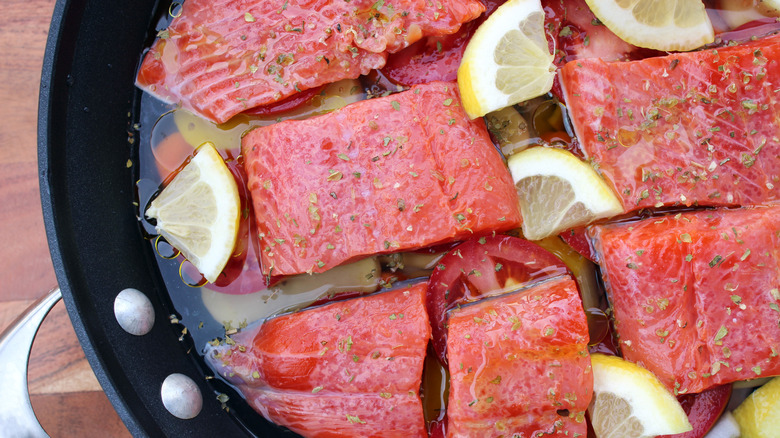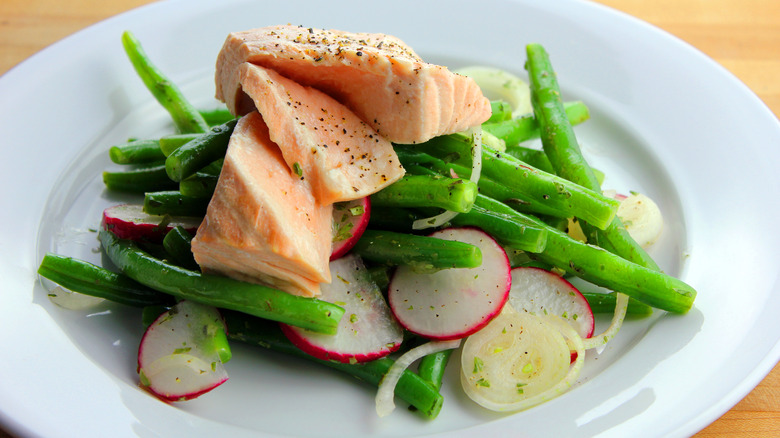The Hot Water Trick To Instantly Kill Bacteria When Poaching Fish
Fish is finicky to cook and the potential dangers that come with consuming it raw add fuel to the pressure fire when you're trying to get it right. Poaching is an easy method to get both jobs done, resulting in a safe and fork-tender filet.
To kill the bacteria on raw fish, you need to heat it above the danger zone, which is 140 degrees Fahrenheit. The CDC deems fish filets or steaks safe to consume once the internal temperature reaches 145 degrees Fahrenheit and the flesh is opaque. Given that the boiling point of water is 212 degrees Fahrenheit, it's not necessary to bring the pot up to a rolling boil to kill off potential pathogens. Even a full simmer, at 195 degrees Fahrenheit, isn't called for. When the water just starts to bubble, known as the quiver stage, it is hot enough to do the job, falling above 140 but below 170 degrees.
One simple trick to ensure you kill off the harmful buggers on your raw fish without overcooking it is to bring the liquid up to just below a boil and add the fish. In his book, "On Food and Cooking," via Washington Post, Harold McGee says this will immediately put an end to the bacteria. Then, remove the pan from the stove and add some cooler liquid to help bring the temperature down to between 150 and 160 degrees Fahrenheit. Let the fish sit in the liquid as it cools, which will gently cook it all the way through.
Why this hot water trick works
Poaching is a moist heat cooking method that results in more tender fish than other dry heat methods will. However, McGee's tip adds an extra layer of protection from any moisture loss to the flesh of the fish. Allowing the fish to sit in the liquid as it cools will ensure the fish retains most of its moisture. This is because it isn't exposed to air as it cools.
Standard poaching involves removing the fish from the liquid once it's done cooking, usually between 10 to 15 minutes. Once you take it out some evaporation will occur from the fish. Hot protein exposed to air experiences moisture loss from its surface — think of the condensation that forms on a Tupperware lid if you store your food before it cools. With McGee's method, instead of removing the fish from the hot liquid when it's done cooking, you let it cool while still submerged. Once you take it out, the fish will be at room temperature, and the evaporation is mitigated. The resulting filet will be supple and tender.

